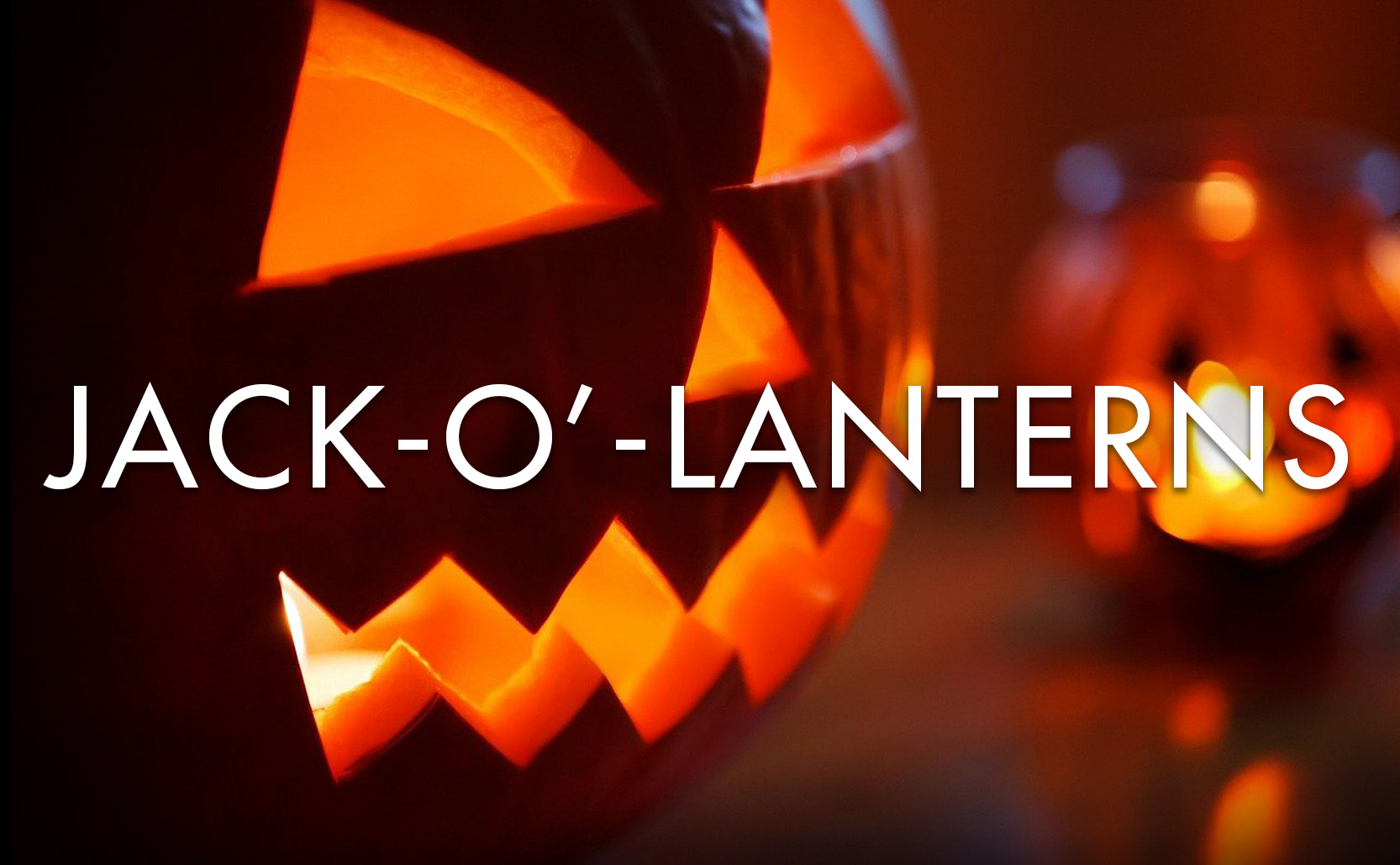Jack-o’-Lanterns
The Jack-o’-Lantern is an iconic part of modern Halloween but its origins are in much older traditions.
Humans have been hollowing out vegetables to use as lanterns for at least 10,000 years. The Māori of New Zealand use the word “‘ue” for both “gourd” as well as “lampshade.” While the jack-o’-lantern is Irish in origin, the pumpkin is a New World vegetable. So before 1492 the Irish used other vegetables to create makeshift lanterns, and one Irishman in particular used a turnip.

Jack of the lantern
Stingy Jack, Drunk Jack, Jack of the Lantern – his name varies about as much as his story does. The common thread among the variations of this folk tale is that Jack was a jerk. A bad drunk, or a liar, or both, Jack generally made trouble for the people of Ireland. Eventually the devil came for Jack but, clever as Jack was, he talked the devil into going for a drink before taking him to Hell. Jack convinced the devil to turn into a silver coin that he could use to pay for the drinks (again, Stingy Jack). Once in coin form Jack put the devil in his pocket beside a crucifix, torturing the devil. He released the devil on the condition that the devil go away for some period of time – some versions say 1 year, others say 10.
Eventually the devil came back for Jack but … and you’re not going to believe this … he was tricked again. This time Jack asked for one final taste of this life and tricked the devil into climbing up an apple tree to fetch an apple. Once in the tree Jack either carved a cross in the trunk, or he placed a cross at the foot of the tree, but either way he trapped the devil up in the tree. This time the devil agreed to go away forever and to never take Jack’s soul.
Eventually Jack died and was obviously refused entry into Heaven, but as per their agreement the devil refused him entry to Hell. So Jack was forced to forever wander between worlds. To light his way in this shadow world of existence, the devil gave Jack a burning coal which he placed inside a turnip as a lantern. This was the first jack-o’-lantern.

Samhain lanterns
The Halloween we know has its roots in the ancient Irish pagan festival of Samhain. A Gaelic harvest festival marking the end of the pagan year and the start of the new year, Samhain is the beginning of the dark half of the year. Festivities begin at sunset on October 31st and go through the night to November 1st. This one evening is believed to be especially supernatural where the boundary between this world and the spirit world is blurred. The ghosts of the deceased as well as the supernatural fairy folk (the aos sí) are said to temporarily cross over into our world.
To appease these spirits, and for protection from any tricks they may play, the ancient Irish would light bonfires, prepare special meals, and perform sacred rituals. Making lanterns from hollowed out vegetables was also believed to help ward off evil spirits.
They’re Coming to America
Eventually the Samhain lanterns and Jack’s lantern came together into one tradition. Jack-o’-lanterns supersized to pumpkins as early as 1834 when Irish immigrants brought the custom to America. Today most pumpkins grown in the United States and the United Kingdom are grown solely for decorations in the Halloween season. Despite being high in fiber as well as vitamin A, most pumpkins are never eaten. Billions of pounds of pumpkins are thrown in the trash each year after serving as seasonal decorations.
So after your jack-o’-lantern wards off the evil aos sí during Samhain, find a second use for that pumpkin as food.
Added info: every Halloween season the town of Kenova, West Virginia comes together to celebrate Halloween in a spectacular way. Ric Griffith’s home, ie. “the pumpkin house”, is decorated with over 3,000 jack-o’-lanterns.


